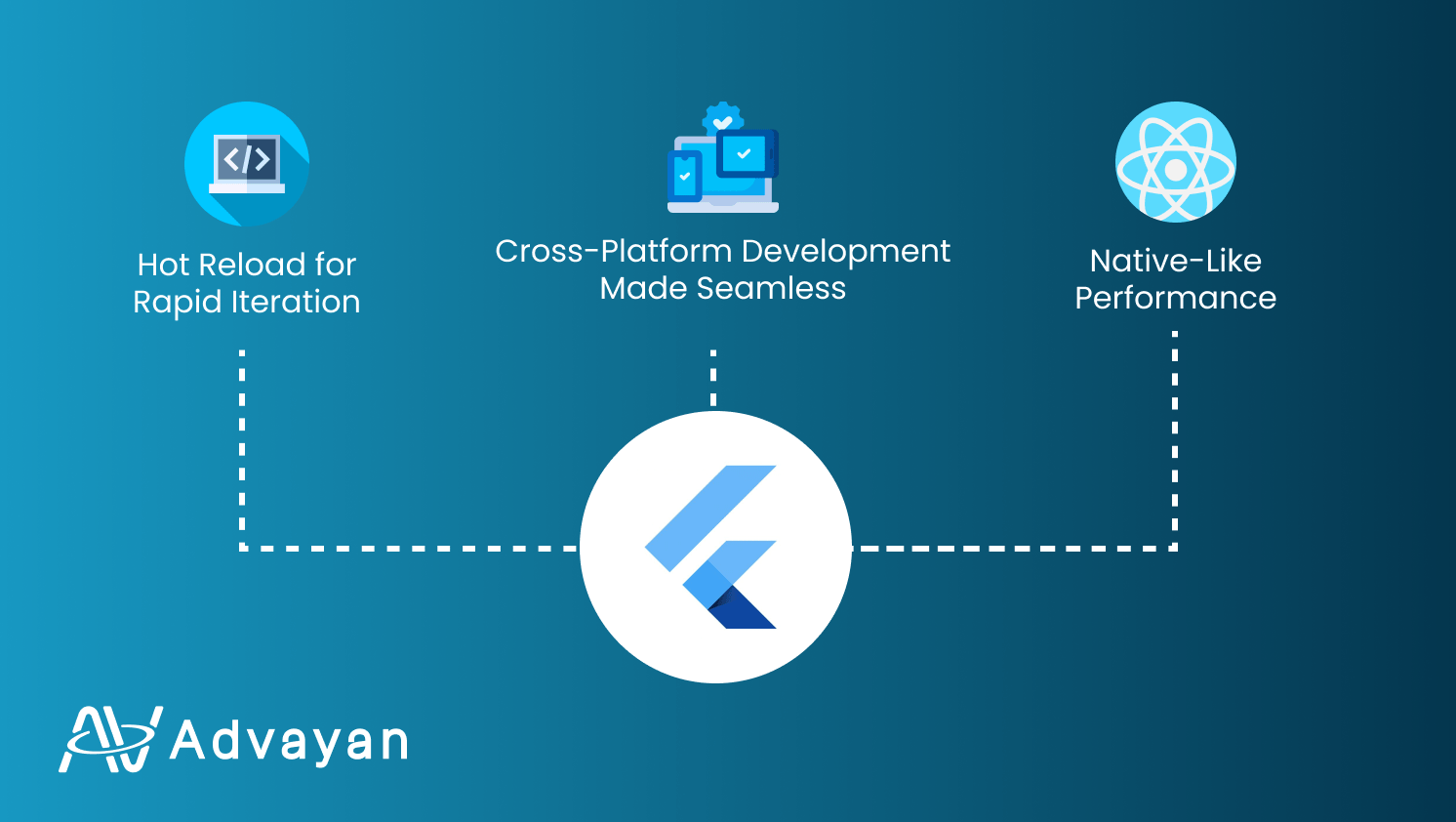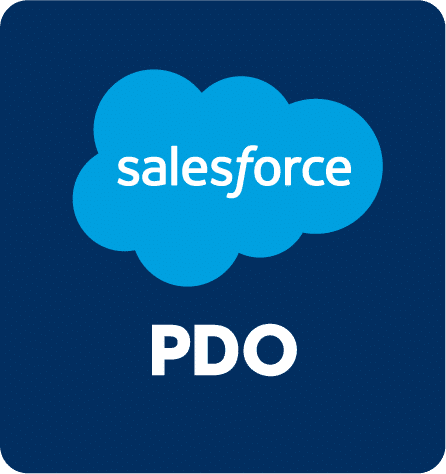
- Flutter App Development
Understanding Flutter App Development and Its Business Benefits
Keeping up with the latest technologies is essential for businesses looking to establish a strong digital presence in the ever-evolving field of mobile app development. The open-source UI toolkit Flutter is revolutionizing the process of creating apps. Advayan’s blog delves into the complexities of Flutter and how it improves the business environment.
Selecting the appropriate development framework is essential as companies realize how important mobile apps are for enhancing customer engagement and streamlining operations. The tech community is paying more attention to Flutter because of its distinctive features. It is an attractive option for creating fluid and aesthetically pleasing mobile apps because of its cross-platform compatibility and adaptable user interface.
Come along as we examine the architecture, features, and business benefits of the Flutter app development. Whether you’re a developer looking for insights or a business owner thinking about implementing Flutter, this blog gives you the information you need to make wise choices about your digital projects. Watch this space to learn about Flutter’s revolutionary potential and significant influence on business results.
Table of Content
- Why Choose Flutter App Development Over React Native?
- Advantages of Flutter App Development
- Business Value of Flutter App Development
- Conclusion
Why Choose Flutter App Development Over React Native?
When deciding between Flutter and React Native for app development, several factors distinguish Flutter as a preferred choice:
1. Performance: Flutter’s compilation of native ARM code results in enhanced performance compared to React Native, which relies on a JavaScript bridge. This advantage ensures smoother animations and better overall responsiveness.
2. Consistent UI: Flutter’s widget-based architecture allows developers to create a consistent UI across platforms, ensuring a unified user experience. React Native might face challenges in maintaining consistent visuals due to variations in native components.
3. Hot Reload: Flutter’s Hot Reload feature significantly accelerates development by allowing instant viewing of code changes without restarting the entire application. React Native offers Hot Reload, but Flutter’s implementation is often praised for its speed and efficiency.
4. Optimized for Cross-Platform Development: Flutter’s focus on cross-platform development is evident in its compatibility with older versions of Android and iOS. This broad compatibility ensures a more comprehensive reach for Flutter-built applications.
5. Strong Community Support: While React Native has a sizable community, Flutter’s community is multiplying, and its documentation is often considered comprehensive. The support from a thriving community contributes to problem-solving and continuous improvement.
Advantages of Flutter App Development
Cross-Platform Development Made Seamless
Flutter’s key strength lies in its ability to facilitate cross-platform app development seamlessly. Developers can create applications for both iOS and Android platforms using a single, shared codebase. This streamlines the development process and ensures consistent performance and visual appeal across various devices. The unified codebase reduces development time and effort, making Flutter an efficient choice for businesses targeting a broad audience on multiple platforms.
Hot Reload for Rapid Iteration
One of Flutter’s standout features is Hot Reload, a powerful tool that allows developers to view changes made to the code instantly without restarting the entire application. This iterative development process significantly accelerates the development cycle. Developers can experiment, test, and refine their code in real-time, fostering a dynamic and efficient workflow. Hot Reload enhances collaboration and reduces the time required for debugging, ultimately leading to faster app development and deployment.
Native-Like Performance
Flutter ensures native-like performance through its “Ahead of Time” (AoT) compilation and the utilization of a highly optimized rendering engine. The AoT compilation translates Dart code into native machine code during the build process, enhancing the app’s startup time and overall performance. The rendering engine contributes to smooth and responsive user experiences, making Flutter-built apps look and feel native on both iOS and Android devices. This commitment to performance excellence positions Flutter as an ideal framework for creating high-quality, performant applications.
Business Value of Flutter App Development
1. Cost-Efficiency
The cross-platform nature of Flutter significantly contributes to cost-efficiency in app development. By enabling developers to create applications for both iOS and Android from a single codebase, businesses eliminate the need to maintain separate development teams and codebases. This consolidation streamlines the development process, reduces resource requirements, and ultimately lowers costs. Flutter’s cost-effective approach allows businesses to achieve more with fewer resources, making it an attractive solution for those seeking efficient and economical app development.
2. Faster Time-to-Market
Flutter empowers businesses to expedite the development process, leading to a faster time-to-market for their applications. The framework’s hot reload feature lets developers view real-time changes, promoting quick iteration and efficient debugging. This rapid deployment capability is crucial in today’s competitive landscape, where being the first to market can provide a significant advantage. Flutter’s ability to accelerate the development cycle contributes to quicker app releases, helping businesses stay ahead in the fast-paced world of mobile app development.
3. Consistent Branding Across Platforms
Flutter’s widget-based architecture is pivotal in creating a consistent and visually appealing user interface across different platforms. This uniformity enhances brand identity by ensuring a cohesive experience for users, regardless of their device. Businesses can maintain a consistent look and feel for their applications, reinforcing their brand image. Flutter’s capacity to deliver a unified and aesthetically pleasing user interface across iOS and Android platforms adds substantial value to businesses aiming for a seamless and recognizable brand presence.
Conclusion
To sum up, exploring the world of Flutter app development offers numerous business benefits that have a significant influence on how well mobile apps perform. The cross-platform capability of Flutter turns into a game-changer, cutting development costs and offering an affordable option to companies looking to reach iOS and Android audiences. The framework’s ability to accelerate the development process ensures a faster time-to-market, which is essential in the competitive landscape of mobile app deployment, thanks to features like Hot Reload.
Additionally, the widget-based architecture of Flutter promotes a unified and aesthetically pleasing user experience across various platforms. This improves user experience coherence and strengthens brand identity. User engagement is positively impacted by the uniformity brought about by Flutter, which reinforces brand recognition.
Using Flutter becomes a strategic decision for companies navigating the constantly changing app development landscape because it provides speed, efficiency, and a cohesive brand presence. Flutter is a valuable tool for companies looking to stand out in the ever-changing world of mobile applications because of its many benefits.








